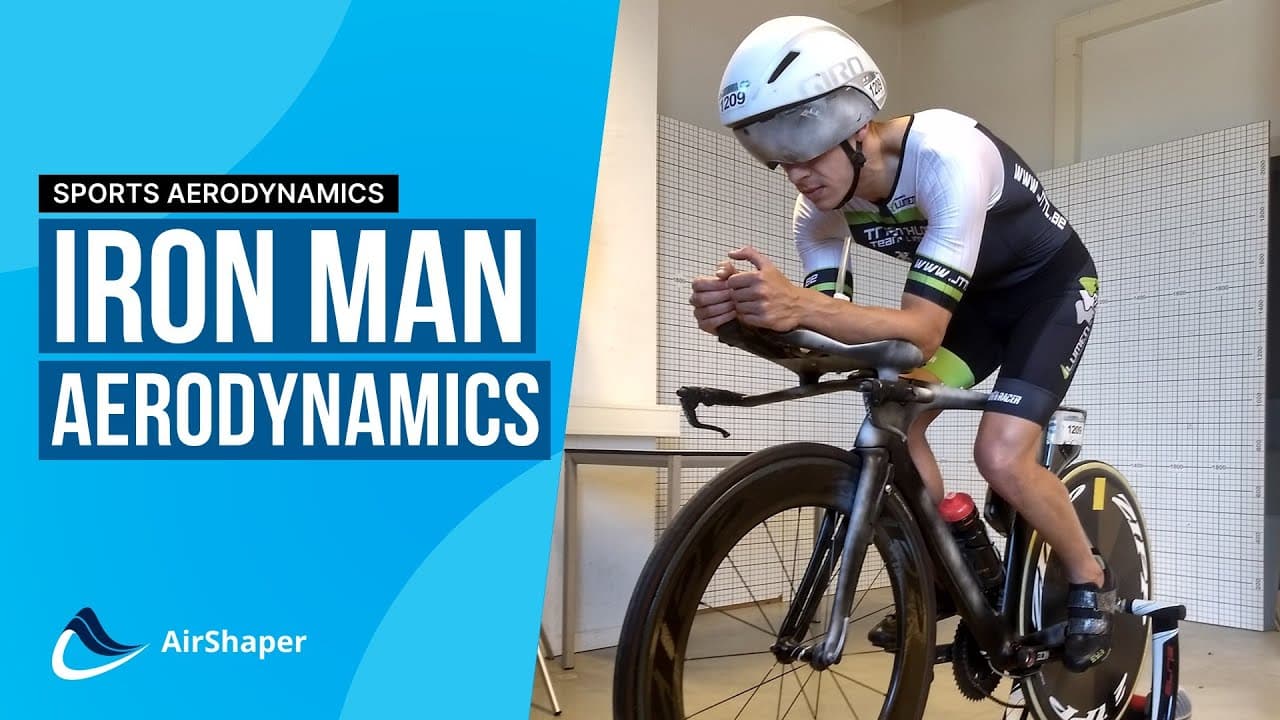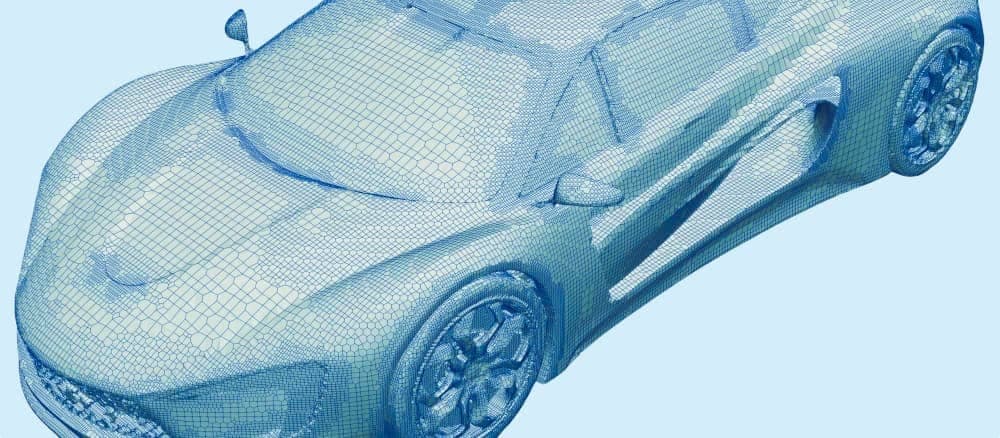The Ironman is one of the longest and most gruelling triathlon competitions in the world. Athletes must swim 3.86km, cycle for 180.2km and then run for 42.195km in the shortest time possible. To be successful in long distance events such as this, energy efficiency is key.
Importance of aerodynamics in cycling
This is particularly true in cycling, where 80% of the energy that a cyclist puts into the pedals is used to overcome aerodynamic drag. Developing a race bike and rider to be aerodynamically efficient can save energy, which can be later used to race faster and longer.
We teamed up with professional cyclist, Ismaël Ben-Al-Lal, to improve his aerodynamic performance in preparation for the 2019 World Championship Ironman in Hawaii. Ismaël won the Taiwan Ironman event in 2018 and is an entrepreneur with a background in engineering.
'For me it's a hobby but as an engineer, I've noticed that on the bike you can go much faster. Not only by training harder but also by training smarter,' Ismaël explains. 'One of the main areas that helps you go faster on a TT bike is aerodynamics. So I've been studying aerodynamics for a while and doing wind tunnel tests.'
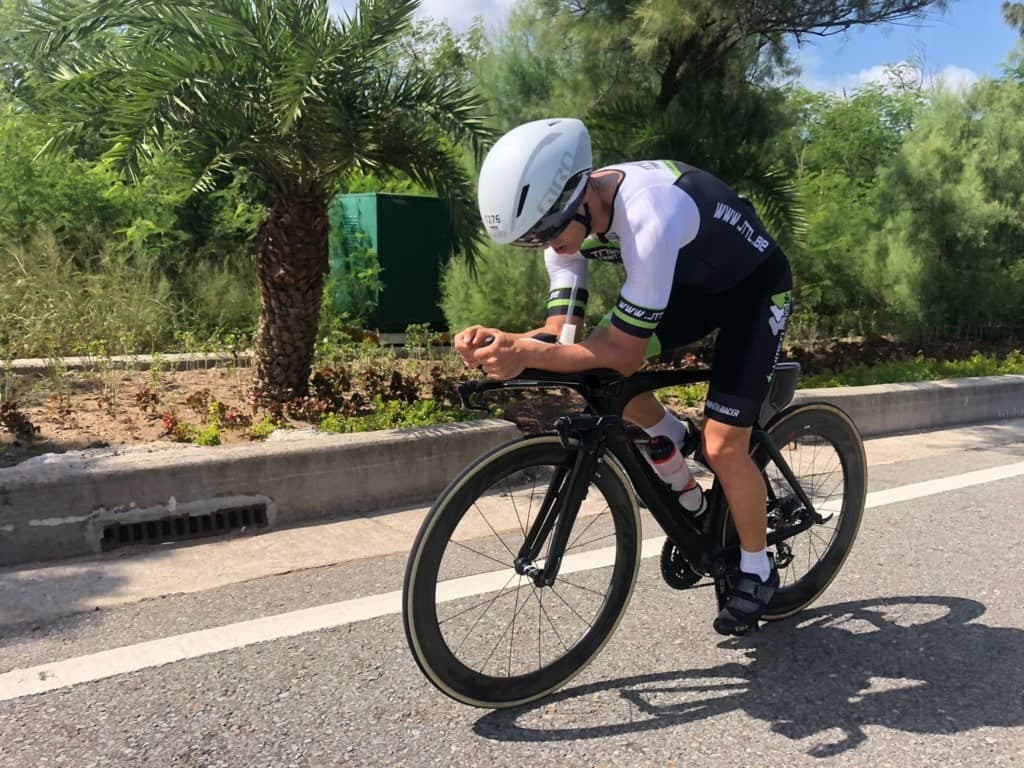
The human body is not naturally aerodynamic, but understanding how drag is created can help you identify how to reduce it. When cycling, there are two main ways to minimise drag: 1) reduce cross sectional area 2) reduce surface friction. This is why you often see professional cyclists hunched over the handlebars whilst wearing smooth, skin-tight cycling gear.
To help Ismaël cycle faster for the same power output at the pedals, we conducted a detailed aerodynamic analysis. This involved a 3D body scan to create an accurate virtual model which was then used for CFD simulations using AirShaper.
In this way, we avoided lengthy wind tunnel tests and were able to remove the bike from the model. This allowed us to explore the aerodynamic effects on Ismaël's body in isolation. In reality however, the bicycle and rider will experience aerodynamic interactions, but this was not so relevant for this study.
3D body scanning
To scan Ismaël on his bicycle, we worked with Voxdale and the product development department at the University of Antwerp. They used an Artec Eva 3D scanner, which projects a pattern of stable light onto an object. Sensors and cameras offset from the light source then analyse the pattern of light and calculate the distance of every point within the field of view. This created a 3D virtual model of Ismaël on his bike which was then used for CFD simulations.
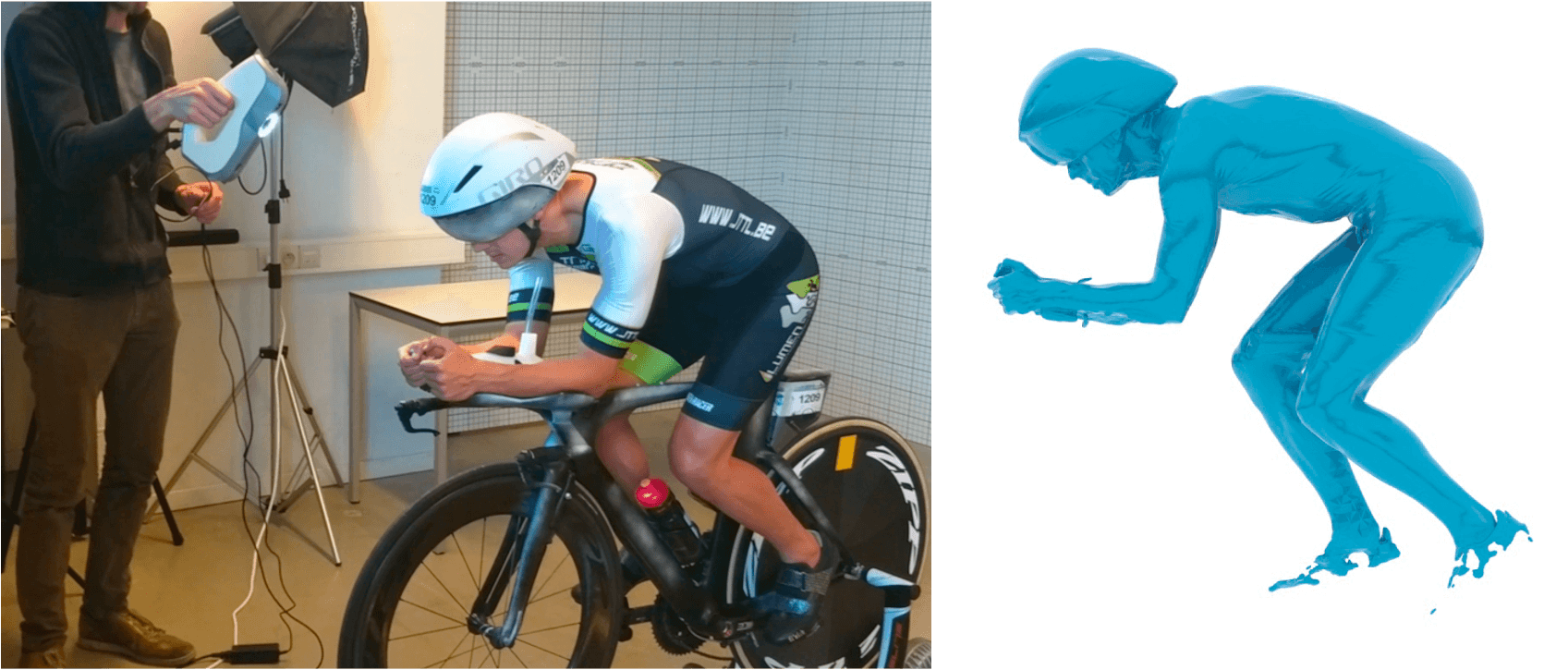
Aero insights
The CFD simulation results revealed several areas where Ismaël could improve his aerodynamic performance. One of the main areas related to his helmet, which the simulations showed was not aligned perfectly straight. From the top view, the helmet’s shape roughly resembles a symmetrical airfoil or teardrop shape.
Long, teardrop shaped geometries such as this can be detrimental to aerodynamic performance if not fixed in an ideal position. If riders tilt their head forwards for example, the drag coefficient increases, as we learned in our airfoil design video, where placing an airfoil at an angle of attack increases drag. To minimize this effect, riders should always keep their helmet straight, aligned with the direction of travel. In fact, it may even be beneficial to turn your head into the wind direction to reduce the angle of attack.

The upper arms were also identified as a significant source of drag. Keeping them tucked beneath the shoulders can help reduce the wake generated at the top of the upper arms.
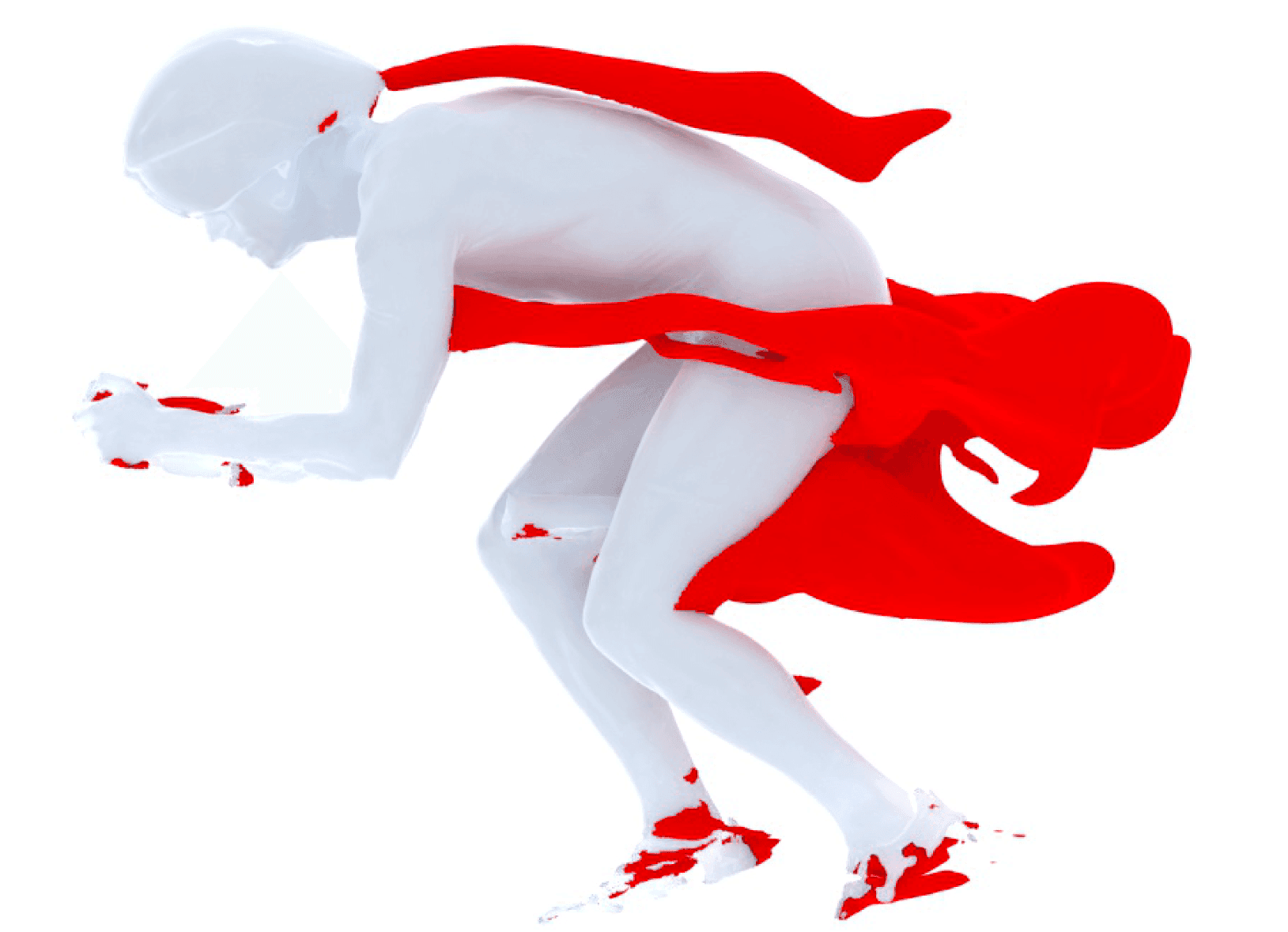
Aero bike design
There are a wide variety of aero road bikes available on the market for aspiring athletes. Many of the fastest bikes utilise similar aerodynamic design elements to reduce drag and maximise performance.
Most high performance bike frames are constructed with very slim tubing. This reduces the cross sectional area of the frame, which minimises drag compared to traditional round tube profiles. These frames are mostly made from carbon fibre or other composites, which not only enables more aggressive profiling but also an extremely lightweight bike.
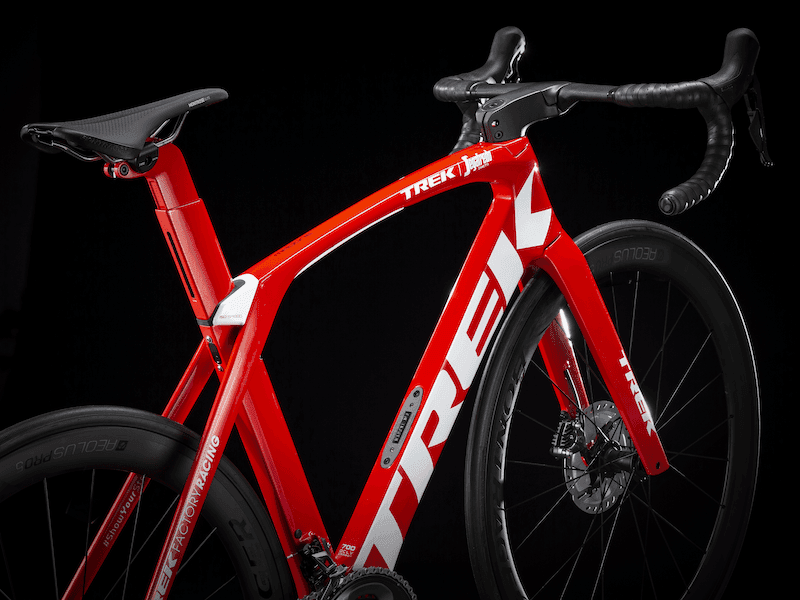
This drag-reducing approach extends to the design of the wheels and tyres, which have an extremely thin profile. Alongside the aerodynamic gains, this brings an additional benefit by reducing rolling resistance. Unfortunately, this does lead to reduced ride quality and comfort.
Similar to vehicles, rotating wheels on a bicycle are a significant source of wake. To combat this, manufacturers have been experimenting with a variety of wheel fairings and covers to minimise airflow disturbances.
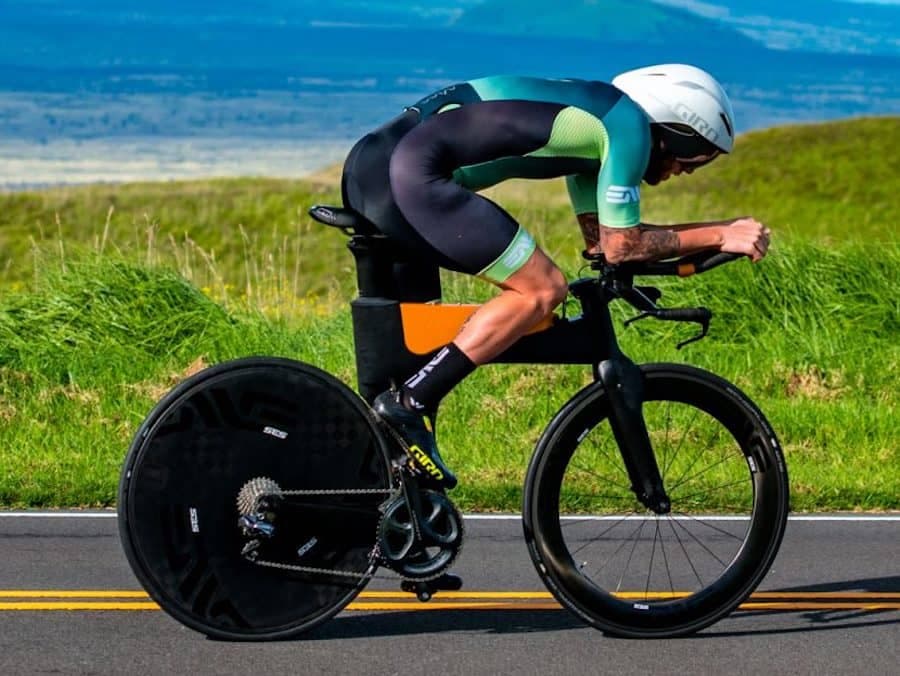
Another critical aerodynamic bike component is the braking system. A set of disc brakes can quickly undo all the hard work that went into designing an aerodynamic wheel. Many constructors work around this by adopting compact rim braking setups. These systems undergo intense development to minimise their profile and therefore drag.
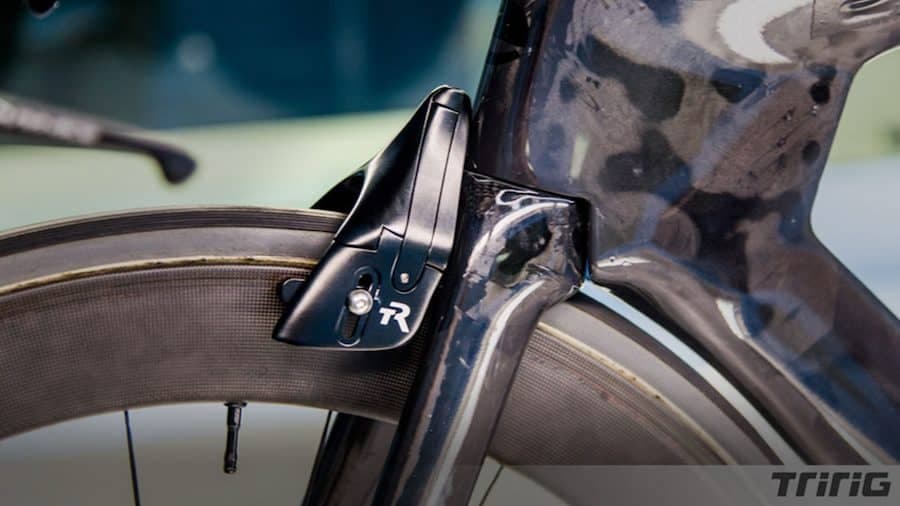
Helmet design
Earlier in this piece, we described the profile of a racing helmet when viewed from above. But why is it shaped like an airfoil to begin with?
Once again, the aim is to reduce the wake as much as possible. When air hits the front of the helmet, it accelerates around the sides. This air needs to be slowed down gradually to avoid separation from the surface of the helmet.
Notice that the helmet slopes backwards very gradually before coming to a point at the rear. This reduces the severity of the adverse pressure gradient and allows the flow to stay attached for longer. Less flow separation results in reduced wake and lower drag.
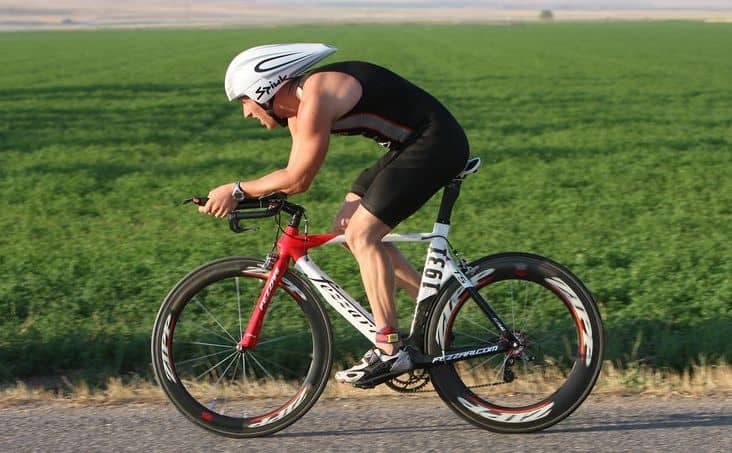
It's even more interesting to view the helmet from the side, with a few key characteristics shown in the image above. First, we can once again see a gradual taper in the rear half of the helmet. Secondly, the profile is also made to smooth the transition from the helmet to the rider’s back. This takes the same ideology of reducing flow separation but applies it to the entire body of the rider.
Rider posture
The most critical component of bike aerodynamics though, is actually the rider! No amount of specialized gear, helmets and skinsuits can make up for having the right riding posture. The best posture strikes a balance between aerodynamics, comfort, and pedalling effort.
Each rider has a unique body build and composition, so the appropriate posture may vary from person to person. That's why many high performance bikes are fully adjustable, allowing the rider to set the seat post and handlebars to suit them. Finding the right setup will take some trial and error.
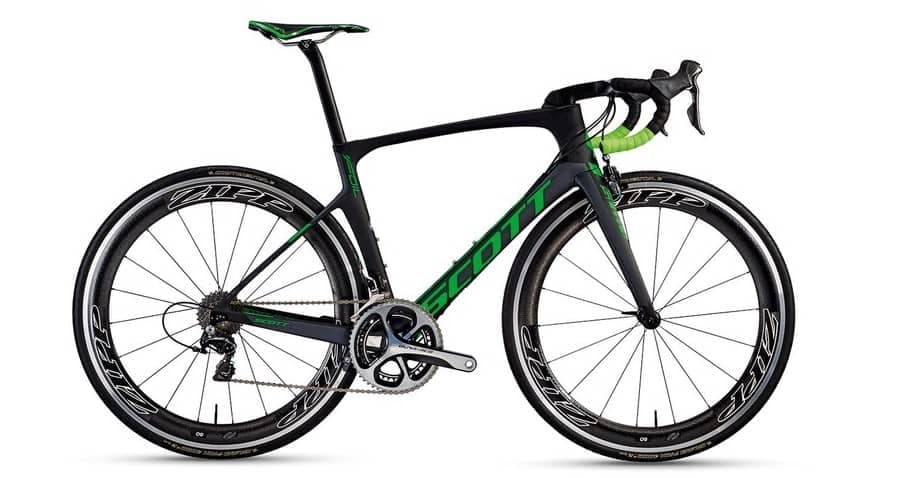
It is important to remember that these improved aerodynamic efficiencies are quite finite, so the casual rider will be unlikely to notice the difference. Therefore, investing in top of the range aero bikes with maximum aero efficiency is probably not worth it for most.
However, for athletes competing at the pinnacle of cycling, every minute gain in performance counts. After all, over the long distances of endurance events, these small improvements can make a big difference to overall performance.
